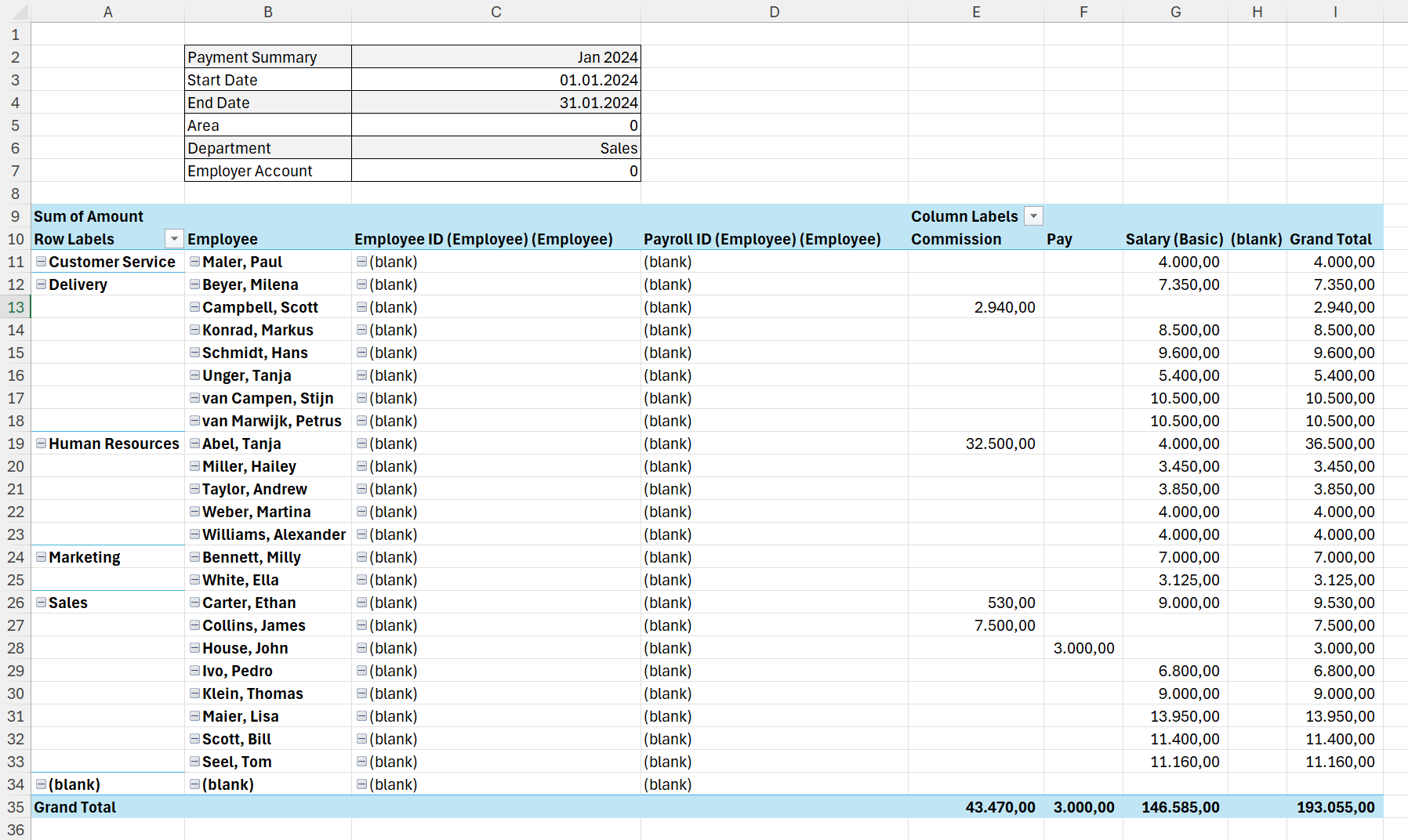However, if you would like to provide more information and analysis or analyze the payment information in more depth yourself, it makes sense to do so using an excel file, which can be easily created using you HR for Dynamics data.
There are three steps to creating more detailed payment summaries in Excel:
First, you need to create a template for payment summaries in HR for Dynamics and download it.
Secondly you need to create a pivot table in your downloaded Excel template to specify the parameters for your analysis. pivot tables can be used to summarize, analyze and visualize large amounts of data. When preparing a document for your payroll provider, you can benefit from the pivot table, ensuring accuracy, compliance, and efficiency in the process. They are easy to use, and provide an easy overview, since they can be linked with charts and graphs. This tutorial covers that second part.
Thirdly, the created Excel file with the pivot table needs to be uploaded back into HR for Dynamics.
From there, you can use the template to analyze every payment summary easily, or send the more detailed payment information to your payroll provider.
